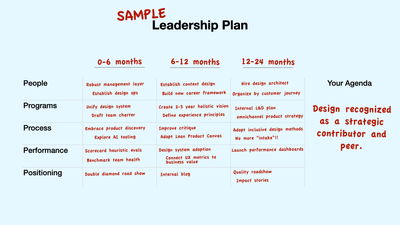Design leadership is change management
Over the holiday break, I reviewed the 5 conversations that Jesse and I have conducted with truly senior design executives for our podcast Finding Our Way, looking for lessons that could be distilled and imparted for those who aspire to such roles. As I pored over the transcripts, an overarching theme emerged: Design leadership is change management.
This was actually stated in the first interview, by Katrina Alcorn, GM of Design for IBM:
"Well, I think if design was fully understood and recognized and invested in and respected, the way, for example, development is, we would not need to be change agents. We would need to be good stewards... I think we’re change agents because all of us doing this are still part of a movement to change how businesses work, how they run."
In my thought partnership work with design leaders, I've at times encouraged 'change management' tactics to help them with specific initiatives. What reviewing these discussions with successful leaders made clear is that change management isn't a tactic—it's the job. And that other leaders would realize greater success if they framed their efforts with this perspective.
Thankfully, these leaders also shared the mechanisms by which they've enacted change. Analyzing these discussions, I distilled a set of practices and a mindsets that should help anyone trying to establish design as an active participant within their organizations. While I won't claim this as some kind of magic key to unlock success, I would encourage using it as a playbook that scaffolds your efforts.
E. Maintain patience and perspective
A. Shape a vision
To lead requires vision. At minimum it's an orientation, pointing the team in the right direction. Even better, it's a destination to which people are being led. Visions come in many forms. They could be mindset shifts (becoming more "customer-centered" or "experience-led"), process evolution (adopting dual-track agile, user-centered and inclusive design methods), or outcomes that show impact (adopting metrics like Google's HEART framework).
Subscribe to continue reading


